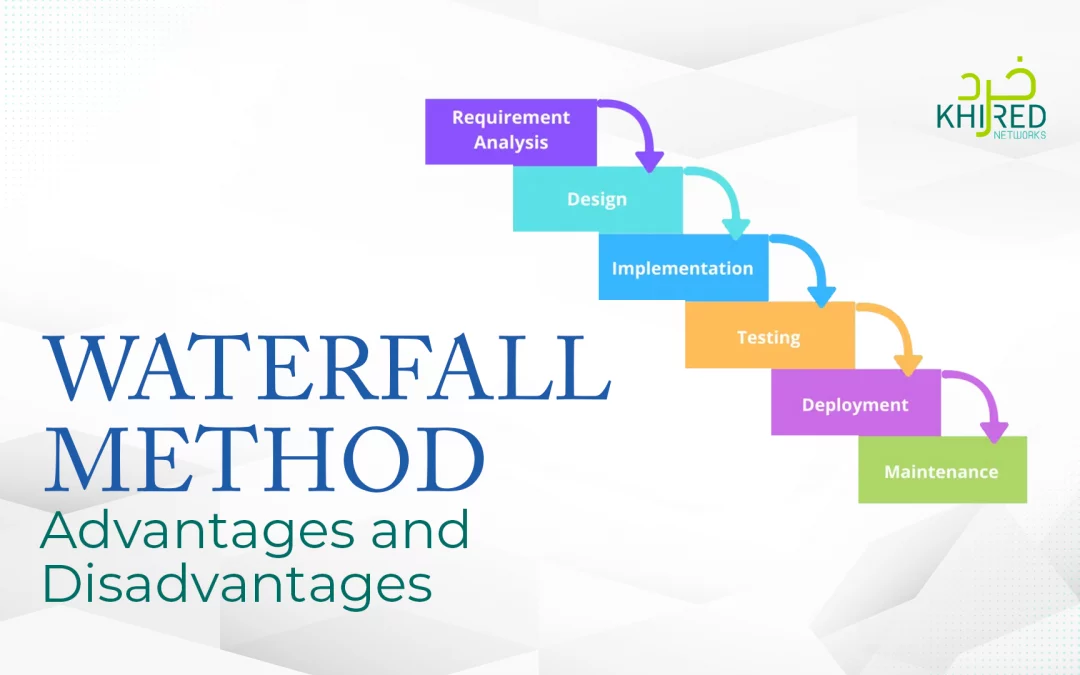Successful project management relies on planning and execution. However, what’s more important is methodology which plays a key role in final delivery.
Over the years, different project management methodologies have evolved. Popular examples include agile, scrum, Six Sigma, waterfall, and kanban. While all these methodologies are equally beneficial in adaptive software development, the waterfall takes the lead for two reasons.
First, the waterfall method is clear, concise, and straightforward. The whole steps involved in project management are defined at the start of the project. Each stage of software development is completed one by one.
Secondly, the development process covers all essential aspects of building a quality product. The process starts from requirements and proceeds through planning, analysis, execution, and testing. Eventually, it concludes with the final deployment. There is no need for backtracking since developers can analyze the progress at every stage.
At the same time, the waterfall methodology also has some disadvantages, such as limited flexibility, time-consuming, and the need for extensive documentation.
This article discusses five key advantages and disadvantages of the waterfall method to help project managers make wise decisions and achieve their desired objectives.
So, let’s get started!
What is Waterfall Methodology?
The waterfall methodology, as the name indicates, follows a linear approach to project management. While it originated from the manufacturing and construction sectors, it is mostly used in software development projects nowadays.
The idea of the waterfall method was first given by Dr. Winston W. Royce in 1970. The approach relies on sequences of phases where every stage is entirely completed before moving to the next one.
There are six critical steps in waterfall projects: Acquisition of project requirements, system design, implementation, testing, deployment, and maintenance. The process proceeds smoothly, just like water flowing down from a waterfall.
Moreover, each step in the waterfall method has essential deliverables. A team cannot revisit any of the preceding phases without reinitiating the process once it has been completed. This structural simplicity allows all aspects of the project to be planned and executed.
The waterfall is mostly suitable for projects with a defined problem domain, few uncertainties, and strict schedules. However, projects that require flexibility cannot be completed with the waterfall methodology since it is difficult to make any changes once the project enters the initial stages.
Advantages of the Waterfall Method
Here are the main advantages of the waterfall method that make it a preferred choice for project managers in the software industry:
1. A Well-defined and Clear Structure
The most prominent aspect of the waterfall method is its well-defined and clear structure. Since all phases follow a linear sequence, project managers can monitor the overall progress at every stage. Besides, they can set clear milestones for each step for more control throughout the SDLC.
This clear structure makes the waterfall method suitable for large teams or mega projects that have complicated interdependencies.
Similarly, there is a framework of structure that keeps the team focused on the tasks and ensures the timely completion of each phase. This defined approach also streamlines the onboarding process for new members. It also removes the risk of miscommunication since everyone uses the same roadmap with well-defined roles and responsibilities.
2. Seamless Estimation of Budget and Resources
Estimating the exact budget and resources becomes seamless with the phase-based nature of the waterfall method. It estimates the timeline, scope, and deliverables making cost estimation of software project management very easy. This predictability is helpful when working with clients with strict timelines and budget estimates.
Once the project requirements are prioritized, resource allocation becomes simpler. The project team knows which employees, software, hardware, equipment, and tools are required at which stage. This estimation eliminates the need for additional expenses at the later stages. That’s why, the waterfall is the perfect choice for projects with fixed budgets.
Likewise, accurate cost estimations give stakeholders confidence and keep the project within financial bounds. Teams don’t have to deal with contingencies.
3. Better Communication and Traceability
Waterfall ensures that every phase is documented. It empowers project managers to maintain a complete log of project activities.
The documentation includes requirements from the initial steps down to the final testing reports. It gives a more efficient way of tracking progress and rectifying problems. Moreover, a traceable path allows stakeholders to review the project at any stage.
Hence, they always stay updated with the overall progress. This transparency builds trust between the project team and stakeholders, particularly when accountability is critical.
4. Prioritizes Project Timelines
Since the waterfall model details the timeline for each phase, it ensures that all project milestones are properly prioritized. Teams clearly know exactly what needs to be accomplished by which deadline so they can better manage time.
Therefore, it is particularly useful for those projects in which deadlines are strict.
When schedules are followed strictly by the waterfall, the project timelines are rarely disrupted. Each phase is completed before the project can move forward. As a result, stakeholders can better plan the delivery of their final product.
5. Smooth Information Transfer
In waterfall, the phase-based approach facilitates information flow from one phase to the other. Summarized documentation at the end of each phase can allow for easier and smoother transfer of knowledge, which might reduce the opportunity for potentially lost information.
Each team can take advantage of the artifacts developed during the preceding phase and can thus act collaboratively. The system design approach in this type of model ensures that teams always use correct and up-to-date information. Besides, the approach does not confuse or do additional rework later in a project.
Disadvantages of the Waterfall Method
Here are some disadvantages of the waterfall methodology for software development projects:
1. Limited Involvement of End Users
One of the most cited disadvantages of waterfall methodology is that it involves minimal engagement of end users during the development process. This model requires the completion of one phase before moving to the next. Hence, there is very limited space for user feedback until the product goes to testing or the deployment stage.
With this limitation, the waterfall method sometimes becomes problematic for software development projects. Once the product reaches customers, their needs and expectations may have changed or become irrelevant.
As a result, it is possible that the end product does not fully meet the needs of clients and may require expensive revisions, or sometimes, may lead to project failures.
2. Applying Changes is Challenging
Each phase of the waterfall method is dependent on the completion of the previous phase. However, if the earlier phase needs a change in design or requirements, it may result in the waste of precious time and money.
In fast-paced sectors, like IT, where market demands keep evolving with changing technologies, a mindset with an inability to adapt to new requirements foes against the structure of this methodology.
Therefore, the changes occurring during the last stages of the development project would affect the overall SDLC. Unexpected project delays could result in project costs and compromise the quality of the product. Hence, the lack of flexibility makes the waterfall less ideal for projects involving uncertainty or rapidly changing requirements.
3. Delayed Product Testing
The Waterfall methodology only allows testing after the entire cycle of development is complete. This ensures the final product gets very comprehensive testing.
But there is a downside to this approach.
It causes delays in identifying bugs in the product that could have been removed easily at the earlier stages of development. Late identification also requires significant rework and badly affects the project timelines.
On the other hand, testing continues throughout development in iterative methodologies such as Agile. Hence, the problems are identified and resolved sooner than in the waterfall methodology.
4. More Suitable for Small Projects
The waterfall method is more appropriate for projects with clear requirements and less complexity. Simple straightforward projects where the scope is not expected to vary with time can be effectively handled using this approach.
However, as the project complexities scale, waterfall methodology becomes less relevant, particularly in projects involving dependencies and strict requirements. This approach is not flexible enough to accommodate the changing needs or new insights developed while designing,
Hence, it becomes inappropriate for projects involving speedy sectors and scientific research. Complicated projects require flexible methodologies that permit continuous change and feedback.
5. Extensive Documentation
The last disadvantage of using the waterfall method is that the project team requires extensive documentation. Although the process ensures clarity and traceability; at the same time, it also requires a lot of time to maintain logs.
Documentation is not bad, but time-taking. It may slow down the project, especially in the initial phases due to long planning and data-gathering requirements.
Moreover, the burden of documentation also results in inefficiencies since team members spend more time writing their reports than writing code. In dynamic environments where speed and agility are so crucial, documentation time could quickly become a weak link.
Final Thoughts
Waterfall is one of the most popular methodologies to manage software development projects. It follows a linear approach with clear project requirements and deadlines. Each phase is connected to the next and ensures a smooth delivery of information throughout the SDLC.
Some of the key advantages of using the waterfall methodology are seamless estimation of budget and resources and better communication and traceability. The clear and well-defined structure of this approach makes it easy for project teams to prioritize timelines and stick to planned goals.
On the other hand, it also has some limitations, such as limited user involvement, difficulty in implementing challenges, and delayed product testing. Hence, a waterfall is more suitable for small projects with fixed requirements and timelines.



